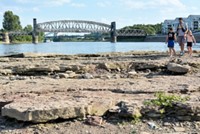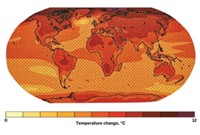Advertisement
Grab your lab coat. Let's get started
Welcome!
Welcome!
Create an account below to get 6 C&EN articles per month, receive newsletters and more - all free.
It seems this is your first time logging in online. Please enter the following information to continue.
As an ACS member you automatically get access to this site. All we need is few more details to create your reading experience.
Not you? Sign in with a different account.
Not you? Sign in with a different account.
ERROR 1
ERROR 1
ERROR 2
ERROR 2
ERROR 2
ERROR 2
ERROR 2
Password and Confirm password must match.
If you have an ACS member number, please enter it here so we can link this account to your membership. (optional)
ERROR 2
ACS values your privacy. By submitting your information, you are gaining access to C&EN and subscribing to our weekly newsletter. We use the information you provide to make your reading experience better, and we will never sell your data to third party members.
Environment
Arctic Sea Ice Is Melting Fast
Researchers find that Arctic ice is disappearing much faster than predicted in UN models
by Bette Hileman
May 3, 2007

Arctic sea ice is melting at a much faster rate than projected by the most advanced computer models, says a government-funded study published online May 1 in Geophysical Research Letters (DOI: 10.1029/2007GL029703, 2007).
In February, the United Nations Intergovernmental Panel on Climate Change concluded on the basis of computer models that September sea ice in the Arctic had declined an average of 2.5% per decade between 1953 and 2006. (September marks the yearly minimum of Arctic sea ice.) In the new study, scientists from the National Center for Atmospheric Research (NCAR) and the National Snow & Ice Data Center, in Boulder, Colo., compared decades of measurements by ships, airplanes, and satellites and found that the area of September sea ice actually declined 7.8% per decade over that period. As a consequence, they predict that if greenhouse gas emissions are not reduced, the Arctic will be ice-free in September as soon as 2020.
"Although the ice is disappearing faster than the computer models indicate, both the observations and the models point in the same direction: The Arctic is losing ice at an increasingly rapid pace, and the impact of greenhouse gases is growing," says NCAR scientist Marika M. Holland, one of the study???s coauthors.




Join the conversation
Contact the reporter
Submit a Letter to the Editor for publication
Engage with us on Twitter